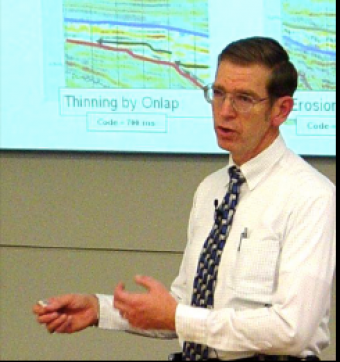This lesson introduces the concept of source rocks for hydrocarbons, where organic material is contained and 'cooked' over time with proper temperature and pressure conditions. The source rock is the first of the essential elements necessary for hydrocarbon generation. This lesson introduces the source rock concept, and lays out the organic matter needed and the proper environmental conditions necessary for hydrocarbon generation. The lecture material ends with a discussion about how basin can be modeled to determine whether hydrocarbons are present.
Begin this lesson with a review of the exercises conducted during "Seismic Reflection", which could take approximately fifteen (15) minutes. The lecture material presented here contains twenty-seven (27) slides, and could take approximately forty-five (45) minutes to present. Additional supplemental information included in the slides is based on a case study from the North Sea, but will take an additional twelve (12) minutes to present. An introduction to the exercise presented here will take approximately eight (8) minutes. Thus, approximately 60-65 minutes are needed for this lesson.
At the end of this lesson, students should be able to:

This course, based on teaching material from Dr. Fred Schroeder (formerly of Exxon/ExxonMobil), reflects on the geology and geophysics basics for the petroleum industry. General geology and basic geophysics are not required, but helpful with the material.